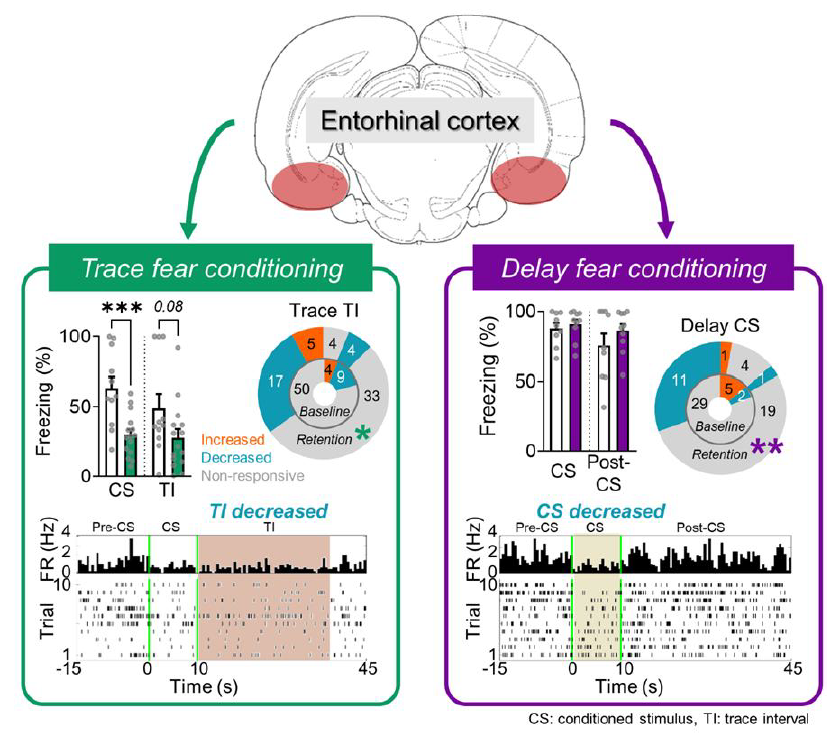Articles
Article Tools
Stats or Metrics
Article
Original Article
Exp Neurobiol 2023; 32(1): 20-30
Published online February 28, 2023
https://doi.org/10.5607/en22042
© The Korean Society for Brain and Neural Sciences
Differential Encoding of Trace and Delay Fear Memory in the Entorhinal Cortex
Mi-Seon Kong1, Namsoo Kim2, Kyeong Im Jo3, Sung-Phil Kim4 and June-Seek Choi3*
1Department of Psychiatry and Behavioral Sciences, University of Washington, Seattle 98195, WA, 2Janelia Research Campus, Howard Hughes Medical Institute, Ashburn 20147, VA, USA, 3School of Psychology, Korea University, Seoul 02841, 4Department of Biomedical Engineering, Ulsan National Institute of Science and Technology (UNIST), Ulsan 44919, Korea
Correspondence to: *To whom correspondence should be addressed.
TEL: 82-2-3290-2069, FAX: 82-2-3290-2662
e-mail: j-schoi@korea.ac.kr
This is an Open Access article distributed under the terms of the Creative Commons Attribution Non-Commercial License (http://creativecommons.org/licenses/by-nc/4.0) which permits unrestricted non-commercial use, distribution, and reproduction in any medium, provided the original work is properly cited.
Abstract
Trace fear conditioning is characterized by a stimulus-free trace interval (TI) between the conditioned stimulus (CS) and the unconditioned stimulus (US), which requires an array of brain structures to support the formation and storage of associative memory. The entorhinal cortex (EC) has been proposed to provide essential neural code for resolving temporal discontinuity in conjunction with the hippocampus. However, how the CS and TI are encoded at the neuronal level in the EC is not clear. In Exp. 1, we tested the effect of bilateral pre-training electrolytic lesions of EC on trace vs. delay fear conditioning using rats as subjects. We found that the lesions impaired the acquisition of trace but not delay fear conditioning confirming that EC is a critical brain area for trace fear memory formation. In Exp. 2, single-unit activities from EC were recorded during the pre-training baseline and post-training retention sessions following trace or delay conditioning. The recording results showed that a significant proportion of the EC neurons modulated their firing during TI after the trace conditioning, but not after the delay fear conditioning. Further analysis revealed that the majority of modulated units decreased the firing rate during the TI or the CS. Taken together, these results suggest that EC critically contributes to trace fear conditioning by modulating neuronal activity during the TI to facilitate the association between the CS and US across a temporal gap.
Graphical Abstract

Keywords: Fear, Memory, Conditioning, Entorhinal cortex


